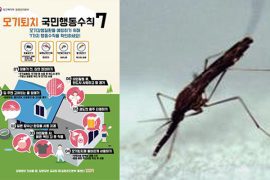/Valerie Honcharuk, stock.adobe.com
Southampton – replacement of cholecalciferol in pregnant women with a proven vitamin D deficiency shown in a randomized study British Journal of Dermatology (2022; DOI: 10.1111/bjd.21721) The frequency of eczema decreased in the first year of life. After that, only a downward trend could be detected.
The UK Maternal Vitamin D Osteoporosis Study (MAVIDOS) was originally intended to investigate whether administration of vitamin D during pregnancy could improve bone density in children.
Epidemiological studies have shown that prenatal vitamin D deficiency has adverse effects on bone development, with potentially lifelong consequences.
A total of 1,134 women with serum concentrations of 25-hydroxyvitamin D ranging from 25 to 100 nmol/l from the 14th week of pregnancy were randomized to either cholecalciferol 1000 IU/day or replacement with placebo.
The primary goal of the study was to increase children’s bone mineral density at birth, based on Lancet Diabetes Endocrinology (2016; DOI: 10.1016/s2213-8587(16)00044-9) published results, although later analysis indicated some increase at 4 years of age (JBMR Plus 2022; DOI: 10.1002/jbm4.10651,
A beneficial side effect of vitamin D replacement may be protection against neurodermatitis, which also occurs more frequently in areas with less sunlight and has been associated with vitamin D deficiency in observational studies.
A team led by Keith Godfrey University of Southampton It can now show that children whose mothers received cholecalciferol during pregnancy had neurodermatitis (atopic dermatitis) only more than half as often as children in the study’s placebo arm in the first 12 months of life. An odds ratio of 0.55 was significant with a 95% confidence interval of 0.32 to 0.97.
However, the protective effect diminished over time and the odds ratio of 0.76 (0.47–1.23) at 24 months of age was no longer significant. Even after 48 months, a protective effect could no longer be reliably demonstrated (odds ratio 0.75; 0.37–1.52).
There was also an interaction with the duration of breastfeeding. The protective effect of vitamin D supplementation was limited to children who were breastfed by their mothers for at least 1 month (odds ratio 0.48, 0.24–0.94). No reliable effect of vitamin D administration was observed for the shorter lactation period (odds ratio 0.80; 0.29–2.17). Godfrey suspected that the replacement increased the concentration of vitamin D in breast milk.
rme/aerzteblatt.de

Web guru. Amateur thinker. Unapologetic problem solver. Zombie expert. Hipster-friendly travel geek. Social mediaholic.





